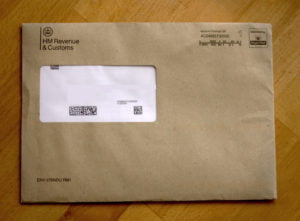VAT Reverse Charge for Construction Industry
The VAT domestic reverse charge for building and construction services comes into effect from 1 October 2019. (1st March 2021) The reverse charge represents part of a government clamp-down on VAT fraud.
A domestic reverse charge means that a contractor receiving a supply of specified construction services must account for the output VAT due, rather than the sub-contractor who supplied the services. The contractor also deducts the VAT due on the supply as input VAT, subject to normal VAT rules, meaning no net tax is usually payable to HMRC. The reverse charge thus removes the scope to evade any VAT owing to HMRC by the sub-contractor.
The charge affects only supplies at standard or reduced rates where payments are required to be reported via the Construction Industry Scheme (CIS). It does not apply:
- to zero-rated supplies
- to services supplied to ‘end users’ or ‘intermediary suppliers’.
How will the scheme work?
A VAT-registered business, supplying ‘specified services’ to a VAT-registered business, other than an end user or intermediary supplier:
- issues a VAT invoice indicating the supplies are subject to the reverse charge and that the customer must account for the VAT. The invoice does not therefore charge any amount for VAT. It should, however, state how much VAT is due, or the rate of VAT, if the VAT amount cannot be shown.
The business receiving the supply of specified services:
- does not pay output VAT to its supplier on supplies received from them
- accounts for the output VAT on supplies received through its VAT return
- reclaims the VAT on supplies received as input tax, subject to normal VAT rules.
Example
Safe as Houses Ltd is a VAT-registered contractor. It uses Brickyard Bill, who is also VAT-registered. Brickyard Bill issues an invoice which shows the usual information required to be shown on a VAT invoice but instead of charging VAT, the invoice states that the VAT reverse charge applies.
Safe as Houses does not pay VAT to Brickyard Bill. It accounts for the VAT on its own VAT return, entering it as both output and input tax. It enters the value of the purchase from Brickyard Bill as part of its inputs. It does not include the value in its outputs.
Their VAT returns will look like this:
- Brickyard Bill puts the net value of the sales in box 6 of the VAT return: but no output tax in box 1
- Safe as Houses uses box 1 to declare the output tax on the services from Brickyard Bill to which the charge applies. It doesn’t include the value of the transaction as an output in box 6. It reclaims the input tax on reverse charge purchases in box 4 and includes the net value of purchases in box 7.
Specified services
Generally construction services covered by the reverse charge are those falling within the category of ‘construction operations’ for CIS. There are two particular points to note.
- The reverse charge includes goods, where supplied with specified services. This is different from the CIS scheme, where CIS payments to sub-contractors who are subject to income tax deductions, are apportioned to exclude the materials content.
- Services excluded from the definition of construction operations for CIS are similarly excluded from the VAT reverse charge, where these are supplied on their own. But where such services are supplied with services subject to the reverse charge, the whole supply is subject to the reverse charge, as is the case for the CIS scheme.
As it can be difficult to determine in some situations whether the reverse charge applies, if there has already been a reverse charge supply on a construction site, any subsequent supplies on that site between the same parties may be treated as reverse charge supplies, if both parties agree. Where there is any doubt, HMRC recommends reverse charging, if the recipient is VAT-registered and payments are subject to CIS.
End users and intermediary suppliers
Domestic reverse charge applies to VAT-registered businesses throughout the CIS supply chain, but is designed not to apply to ‘end users’ or ‘intermediary suppliers’. End users are VAT-registered businesses receiving supplies of specified services which are not sold on as construction services. Examples could be a construction firm selling an interest in land as a newly-built office, or a large retail business having trading premises built for its own use.
Intermediary suppliers are VAT-registered businesses in receipt of CIS supplies who are connected or linked to end users. Examples could be landlords and tenants, or recharges of building and construction services within a group of companies.
Businesses will need to know when they are dealing with an end user or intermediary supplier, so that they can invoice appropriately. The end user or intermediary supplier should inform the supplier of their status so that VAT can be charged as normal. If the end user does not provide confirmation of status, the supplier should issue a reverse charge invoice.
There are practical difficulties that may arise here. One way to navigate the issue, for businesses dealing frequently with end users, may be to include a statement in business terms and conditions to the effect that it is assumed that the customer is an end user, unless they indicate otherwise.

HMRC policy
HMRC has now issued technical guidance Click Here.
There will be a ‘light touch’ on genuine errors for six months from October, where businesses are aiming to comply and act in good faith. Businesses knowingly claiming end user status when the reverse charge should have applied, however, will be liable for the tax due, and may be liable for penalties.
Planning for the new regime
Key action points:
- establish when the reverse charge is likely to apply to supplies to and from other VAT-registered contractors and sub-contractors you deal with. Before you can apply the reverse charge you need to be satisfied that your customer is VAT-registered and your contract is within the CIS
- check that your accounting systems will calculate and report reverse charge supplies. Invoices will need to specify that the reverse charge applies
- establish procedures for additional information you will need from some of your customers
- consider the training staff will require to deal with the new rules
- estimate the cash flow consequences on your business if you no longer hold output tax. It may be that changing to a monthly VAT return cycle to accelerate payments due from HMRC would be of benefit.
If you are a supplier using the Cash Accounting Scheme or the Flat Rate Scheme, neither of these schemes can be used for the supply of services that are subject to the reverse charge. This may mean that it is no longer beneficial to use these schemes.
If you would like further explanation or clarification of how the VAT reverse charge for construction services affects your business, or assistance with how to process reverse charge transactions on your accounting system, please do not hesitate to contact us.

